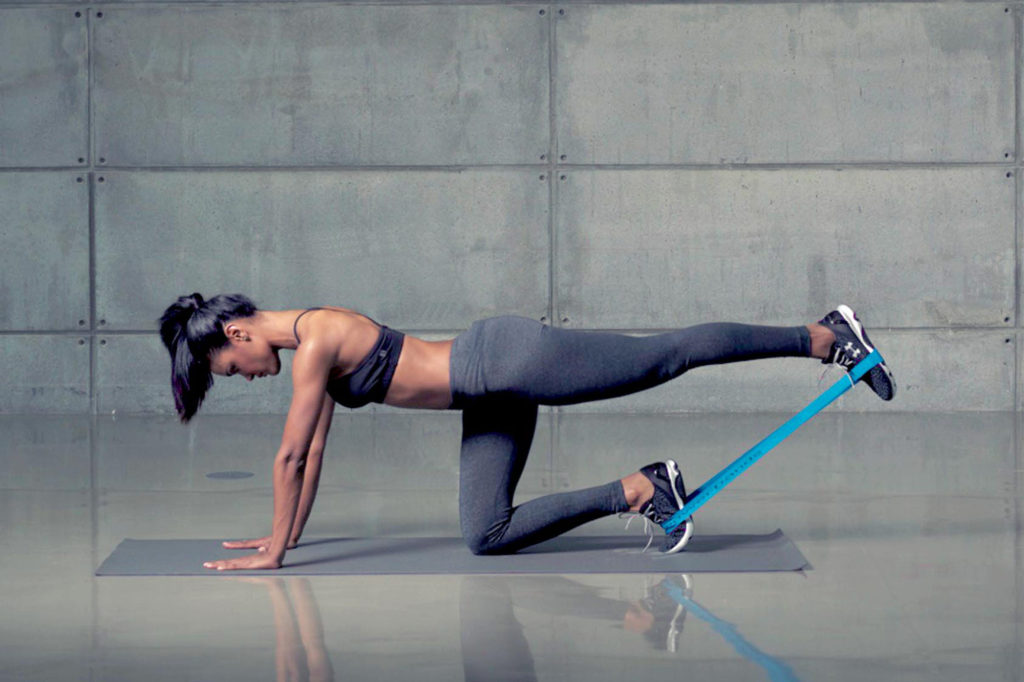Home gym equipment doesn’t have to be expensive.
Home workouts are a game-changer. They save time and money, and if you know what you’re doing, they can be effective and fun. If having a home gym sounds ridiculously 1%-ish, needing tons of space and money, think again. There are loads of home gym equipment ideas that are affordable (or replicable for less money) and don’t need an entire room. One even fits inside your purse.
You can always do bodyweight workouts, but you might want to shake things up and have even more fun with some new workout toys (oops, I mean equipment).
Below are my favorite home gym equipment ideas, most of which fit a tight wallet and a tight space. Some are for bodyweight workouts, and some are fun and versatile weighted tools. I currently own or have owned a version of each of these pieces. (If I don’t anymore, it’s only because I chucked everything when I moved from California to New York.)
Home gym equipment ideas.
Doorway pull-up bar.

Ah, the pull-up bar. This might be my absolute favorite.
And hey—before you scroll past this, let me tell you that pull-ups are achievable. Not only that, they burn fat like crazy, get you a six-pack (seriously), and look badass. I suggest you take a look at my post on how to learn them.
Having a pull-up bar in your home is helpful because if you leave it up, you can practice doing a modification whenever you have a moment. Getting a snack? Do some proper hangs. Going to the bathroom? Do a negative pull-up. Then one day, you’ll find yourself doing an honest-to-God full-blown pull-up and you won’t be able to contain yourself.
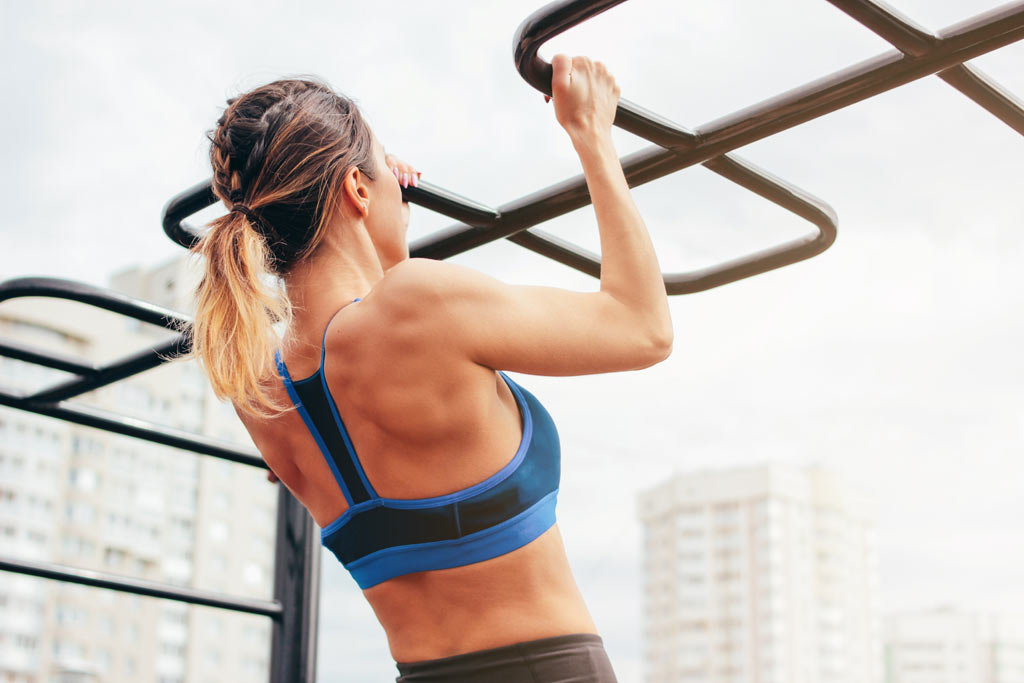
So yes, you can learn one, and yes, it’s worth it.
The other great thing about this pull-up bar is that it requires no installation and is completely removable.
However, if you have soft wood on your door jamb like I do, hang a couple of towels over it for cushioning.
And another great thing (last one, I promise) is that you don’t have to fight other people to use it. At the gym or at a park, the pull-up bar is usually a hot commodity, so you have to work in with other people. This is inconvenient if you’re doing a workout that requires little downtime.
Resistance bands.
I waited a long time to get these for some reason, but I absolutely adore them. There are many kinds of resistance bands, but I’m talking about what some call “minibands.” It’s a set of four latex bands in a closed circle, about ten inches long.
Resistance bands must win the effectiveness-per-ounce-per-dollar test. They are super cheap, super light and super effective. Even though they don’t technically add weight to your workout, they do add resistance and can work wonderful nooks and crannies on your body that are hard to get otherwise.
There are four bands of varying resistance included in the pack, all of which come neatly kept in a little black bag. I keep my black bag in my purse. That way, I always have them with me.
I love putting them around my calves for jump squats, low jacks, and weighted squats. You could also ramp up the intensity and use one above the knees as well. Involve more of the body by putting them around your wrists and holding your arms out or doing short pulses in and out.
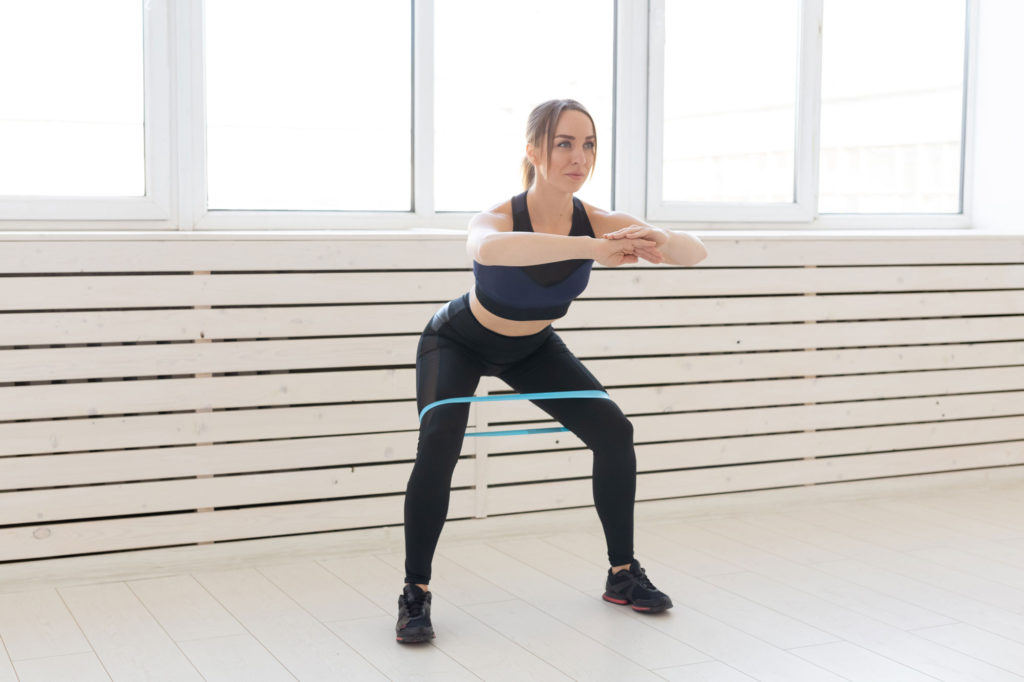
They’re also fantastic for glute exercises. I am not a fan of regular donkey kicks (they’re not that effective), but add a miniband and you have some resistance that will do that bum some good. Add them to bridges, thrusters, or clamshells, too.
Uses for the minibands are endless and effective. And they are excellent to travel with, abroad or just to the beach for a workout under the sun.
Adjustable kettlebell.
Kettlebells have come into the mainstream in the last ten years, and it’s a great thing for all of us. Almost every kettlebell exercise involves multiple muscle groups at once, working not just your strength, but your coordination, agility, balance, and your cardiovascular system.
And they’re great for your core. You can get six-pack abs without any ab exercises if you use kettlebells along with a good, clean diet and some push-ups and pull-ups.
The problem with kettlebells, though, is that it’s hard to decide which weight or weights to buy. Getting more than one is often not feasible if you have limitations on budget or space. Buying just one kettlebell is an option, but it limits the exercises you can do.
The solution? Adjustable kettlebells! They take up the space and cost of just one, with the option to upgrade the weight up to 50lbs. Yes, they work, and yes, they’re amazing.

Each kettlebell starts at 20lbs, and you can safely add up to 30lbs more to each. However, you DO need to buy the weight discs separately. Luckily, they’re not so expensive. I suggest getting ones in 5lbs amounts that are about six inches in diameter so they are the same circumference as the kettlebells (these look good). And don’t throw away the spacer discs. They come in handy to make a snug fit when you’re adding the weight plates.
While I chucked a lot of my home gym equipment in my cross-country move, these kettlebells I paid to ship to New York. They are so worth it.
Dip station.
Having a dip station—which isn’t just for dips—opens up a wonderful range of exercises for your upper body and abs. If you’re working with just bodyweight, it’s also a way to get more pulling exercises in for a balanced workout.
My favorite exercise on the dip station is the Aussie pull-up, also called the down-under pull-up or inverted row. You can use both hands on one bar, either in an overhand or underhand grip (or one of each), or hold both bars with your palms inward. They’re also great for leg or knee raises. Hold yourself up, a hand on each bar, and raise your knees up as close to your chest as you can, then lower them back down, ideally keeping your weight on your hands. These also work on the pull-up bar, but require greater forearm strength to do so. Leg or knee raises on the dip station allow you to focus on the abs.
Confession time. I don’t have this exact dip station, though it’s on my shortlist. Also, this one looks great. It’s adjustable!
I got around this by using a walker I found at a local second-hand shop. You can also build one with PVC pipe.
Another option is to take two chairs and put a broomstick across them. It only gives you one bar going across, but it’s a great option in a pinch. Just be wary of the broomstick shifting. You can see more about these options and the Aussie pull-ups on my pull-up post here.
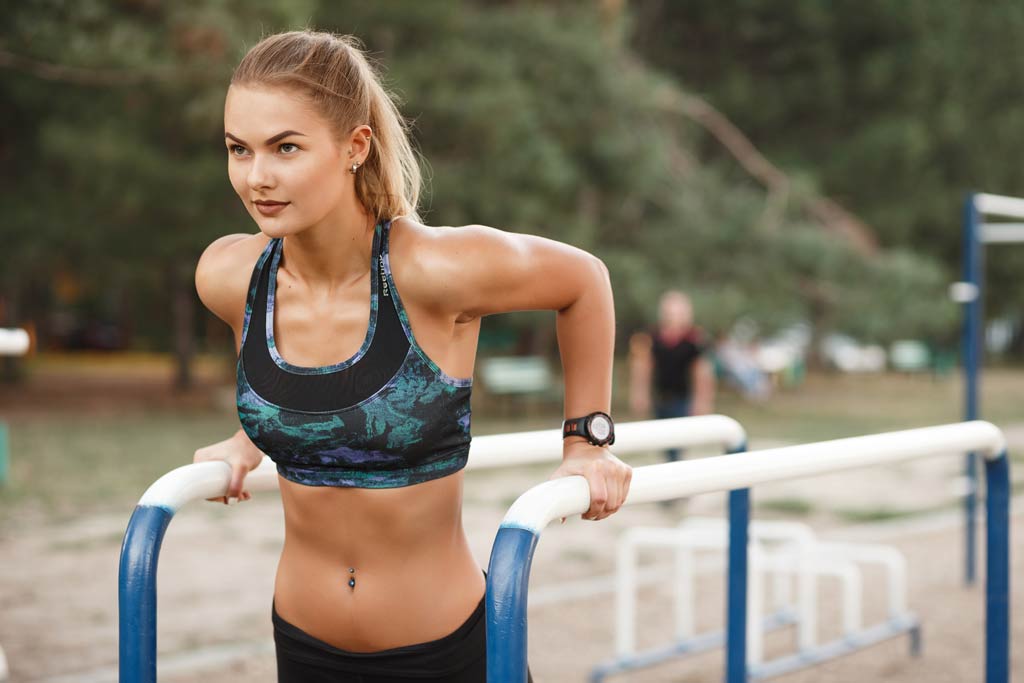
Sandbag.
I have written a whole post about why the sandbag is the best piece of equipment for your home gym, so I won’t go into detail here. You can make a sandbag or buy one, depending on what you have to spend: time or money. Either way, it’s an excellent piece of equipment to own. If you’re a beginner to fitness, it’s a great option as your first weighted equipment. Easier and kinder than kettlebells, more functional and versatile than dumbbells, the sandbag was my first weighted love.
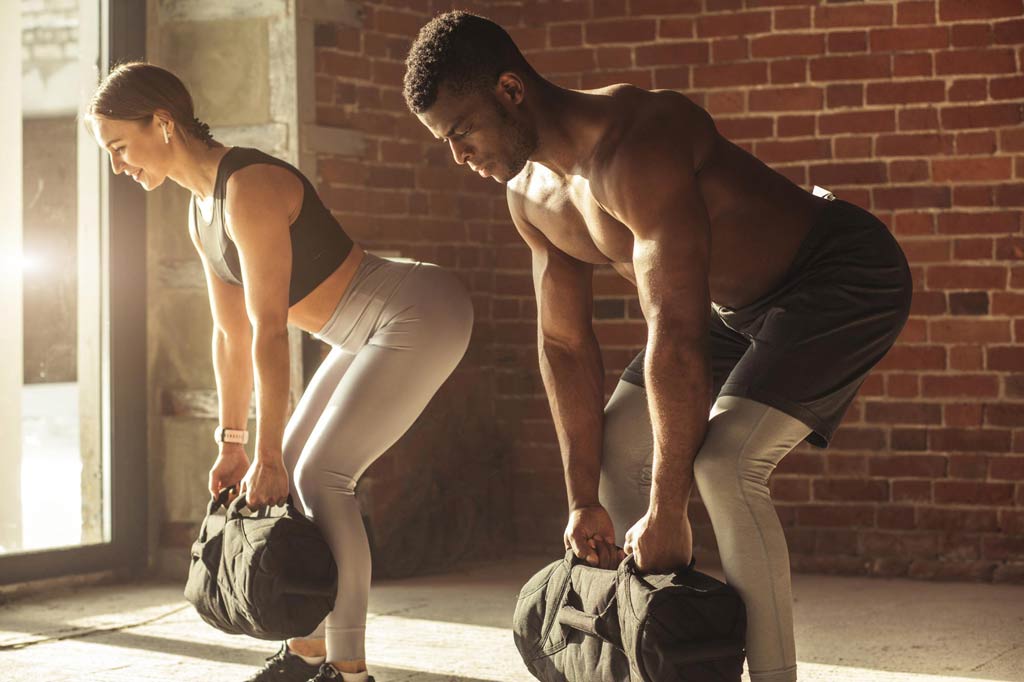
This sandbag is adjustable, which is convenient as you change workouts and progress. Please note that you will have to provide your own weight. I suggest getting pea gravel from your local home and garden store.
Balance ball.
The balance ball and I go way back. I originally purchased it so my husband could use it as a bench for dumbbell presses, but the ball came with this whole workout DVD by Tanja Djelovich and it opened up a new world to me. I loved it so much I did it those workouts exclusively for, like, a year straight.
Balance balls are light and pack well, but they don’t blow up fast, so you will want a closet or corner to stuff it into.
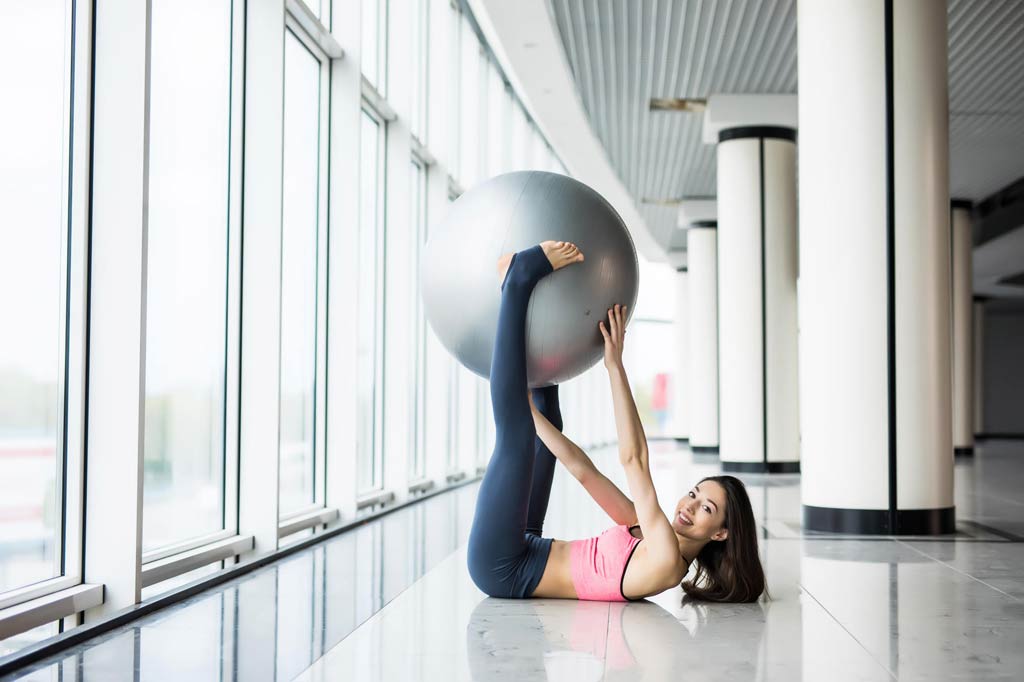
That being said, they are delightful pillowy pieces that open up a world of possibilities. The instability of the ball is great for bridges, roll-outs, thrusts, planks or push-ups. The go-to exercises involve the abs, but you can also use it like a medicine ball, twisting to the side on a back lunge or just holding in front while performing squats. It sounds easy, but squeezing the ball over a period of time is a nice way to bring in extra resistance.
And when it’s not in use, you can use it as a desk chair for good spine health.
Again, the possibilities are endless.
Medicine ball.
Like the balance ball and sandbag, you can build a whole workout around a medicine ball. They aren’t heavy, but the trick comes in finding all kinds of ways to move the ball around your body as you work out. A lunge and twist is my personal favorite, similar to one with the balance ball. You can do mountain climbers or push-ups on them, giving you a bit more instability, working the core and a few more calories. Wood choppers or mason twists are also great choices, working the abs. Try jump squats or burpees with them! It takes a simple exercise to the next level.
I have a 10lbs medicine ball, and if you’re an absolute beginner I would try an 8lbs. They are about $30 a pop, and as you progress, you want to be able to use it.
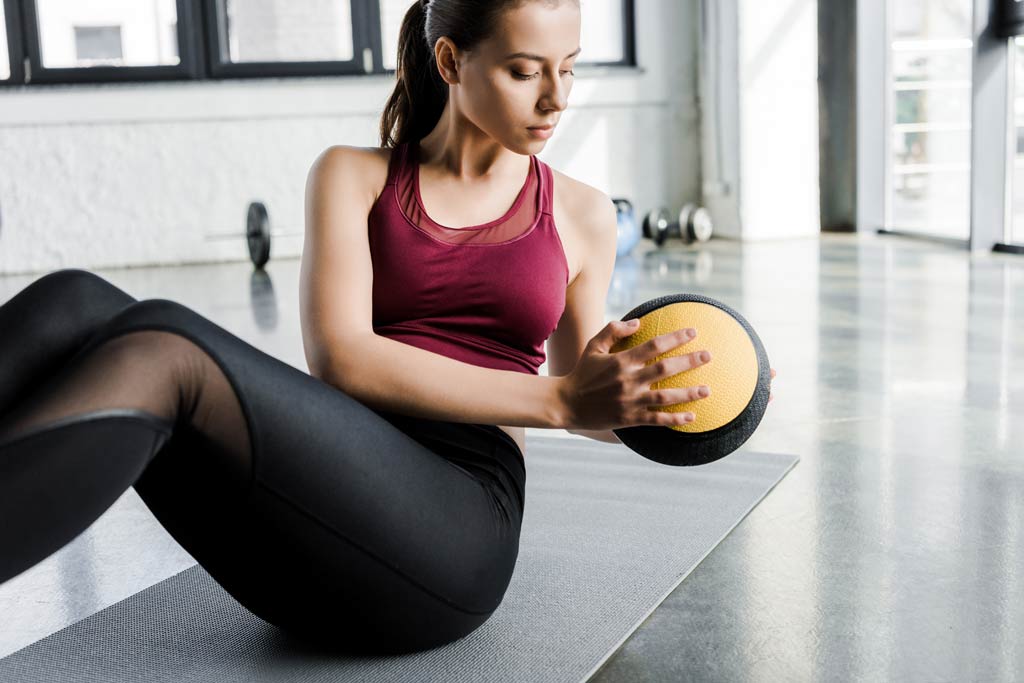
Sliders.
These aren’t even pieces of workout equipment. They’re furniture sliders for moving, and give you loads more variations on your normal push-ups, planks, and lunges. I love using them for sliding side lunges and back lunges. Bend down on one leg, the other foot on a slider moving out to the side as you go down. Once your thigh reaches parallel to the ground, bring it back in at a moderate pace. Now do the same thing going backward. This is one rep. Over time, it builds a nice burn on the standing leg.
Also, try them for planks or push-ups. In plank, place your feet on the sliders and bring them up to your chest, and then back to a plank. You can also put your hands and feet on sliders and move them all out as you go down in a push-up.
Cheapo alternative: On a carpet, use Tupperware lids. On a hard floor, use a towel or small cloth.
Jump rope.
The jump rope is the first piece of home gym equipment that many of us use, though not technically for working out. It’s simple, small and versatile, with immense opportunity for an intense cardiovascular challenge.
If you’re doing an HIIT workout, add an interval or two of jumping rope to keep your heart rate up. Or take a break midway through your workout to get in a quick 5-minute cardio burst.

Depending on your home setup, though, it may have to be done outside.
Special mention:
Suspension training straps.
I’m including this as an add-on because this is one piece of equipment on this post that I do not own, nor am I well-versed in using it. But I’ve had my eye on this for a while now.
These are loosely known as TRX straps, as TRX is the brand that made suspension training popular. The TRX straps aren’t cheap, though, at about twice as much as the brand above.
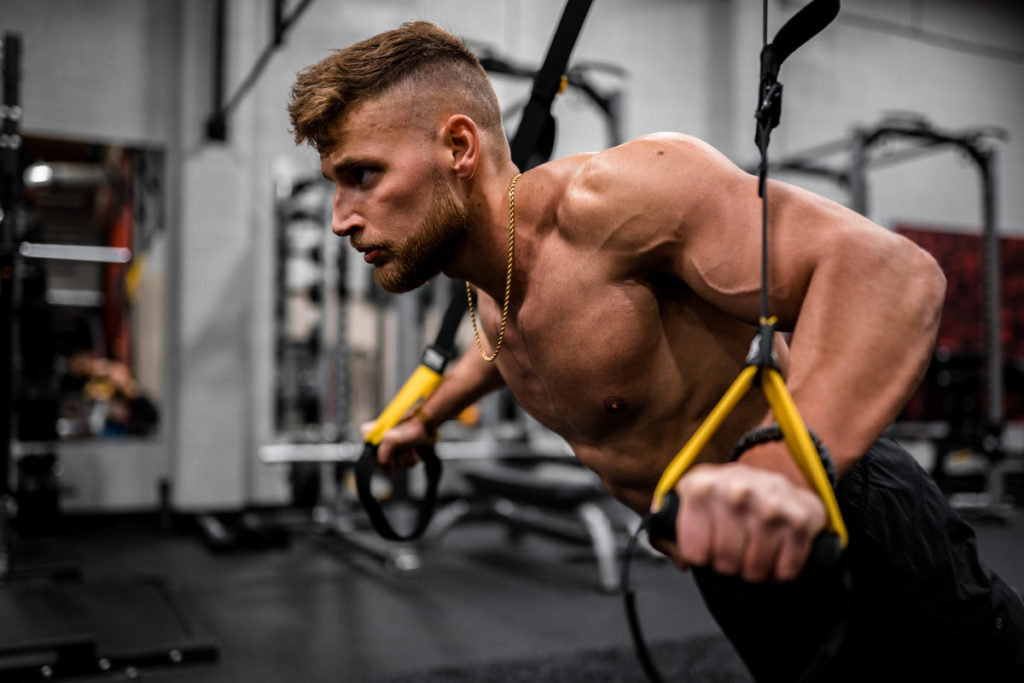
You can use them for pull-ups or Aussie pull-ups, hanging from a pull-up bar (but be careful if you have a doorway pull-up bar), for push ups with your feet resting on them, for knee or leg raises, and for so much more. You can attach them to a variety of things, and they don’t have to be horizontal. Attaching it to a vertical post gives you options for lots of upper body exercises like curls, rows and fly presses. This post has a ton of helpful information on how to use the straps.
There are more home gym equipment ideas, too: Bosu ball, adjustable dumbbells, slam ball, resistance bands (larger ones), workout disc, ab-roller, and the soft medicine ball.
Start with one piece of equipment and look up all the amazing exercises you can do with it. The variety will keep you occupied and interested, with an added benefit of burning more calories and working more muscles.
Related home gym equipment posts:
- Metabolism on FYR: Hannah Eden’s 30-Day Fitness Plan
- Why the Sandbag Is the Best Home Workout Equipment
- Stuck in the GD House? Try These Home Workout Videos!
- How to Start Working Out at Home—and Actually Succeed
- How to Make a Sandbag for Home Workouts (Easy and Cheap)
- This HIIT Workout Plan Will Kick Your Butt (And You’ll Love It) (Hannah Eden’s FYR)
- Learn to Do a Pull-Up (Yes, It’s Possible)

